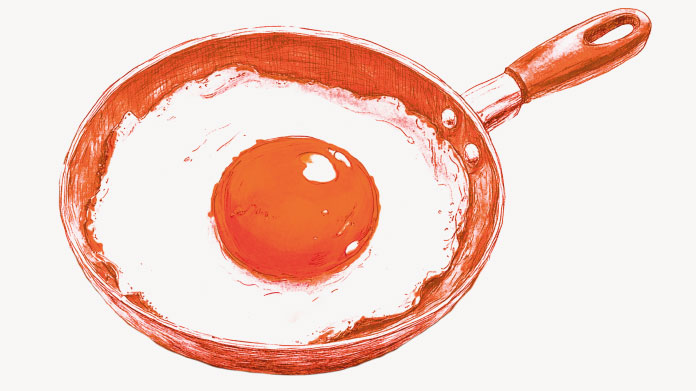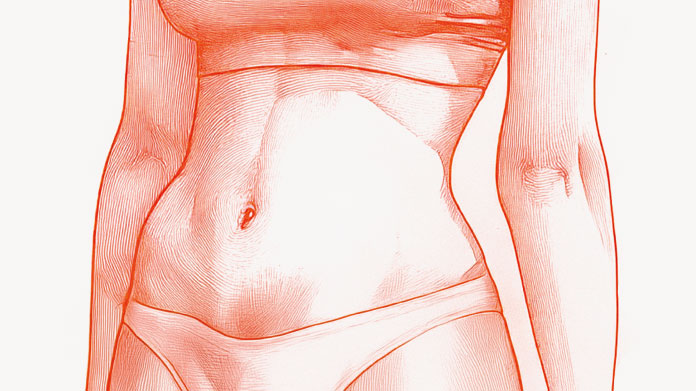
Mechanisms involved in the accumulation of fat
Adipose tissue is undoubtedly one of the reasons why, for millions of years, humans have managed to survive famines, diseases, and climate warming and cooling (1).
A slim, healthy man, weighing around 75 kilos, is thought to have an an energy reserve of about 100,000 kcals in his adipose tissue, a significant amount.
The problem is that adipocytes, cells able to accumulate excess fatty acids in the form of triglycerides, have an almost infinite capacity for storage. Worse still, and contrary to long-held belief, recent studies suggest that the body is capable of making new ones (2).
Consequently, any excess consumption of alcohol, simple sugars or fats leads to fat accumulating in adipocytes. In fact, all surplus calories are converted into triglycerides stored in adipocytes: if your calorie intake exceeds your energy expenditure, you accumulate fat.
It’s the great disease of the 20th and 21st centuries: a sedentary lifestyle with little physical activity, coupled with a diet high in calories, alcohol, fat and simple sugars, has resulted in a global pandemic of excess weight and obesity: incidence of obesity has almost trebled since 1975, and in 2016, 39% of the world’s population was overweight, of which 13% were obese (3).
Garcinia cambogia to prevent accumulation of fat
Also known as Malabar tamarind, the tree Garcinia cambogia is part of the mangosteen family, the bark and fruits of which have been used for thousands of years, especially for flavouring Asian cooking, but also in traditional pharmacopoeia.
Recent in vitro studies have demonstrated the effect of Garcinia cambogia’s active principle on the body. Hydroxycitric acid appears to inhibit ATP-citrate lyase which converts sugars into fat. Other studies have shown hydroxycitric acid to have a hunger-suppressing effect, a property from which you can benefit by taking certain supplements (such as Garcinia cambogia standardised to 60% hydroxycitric acid) (4).
Garcinia cambogia is thus recognised today as an aid to weight control and to reducing fat storage, as well as for helping to maintain normal blood sugar levels.
Coleus forskohlii for breaking down fats
A perennial plant from the lamiaceae family, Coleus forskohlii, or Indian Coleus, has been used for thousands of years in Ayurvedic medicine.
This plant’s most powerful active principle is actually a diterpene called forskolin which acts on adenylate cyclase. This is an enzyme involved in lipolysis, the breaking down of fats in adipocytes (5).
Coleus forskohlii is thus an essential tool for helping to combat the accumulation of fat: it offers recognised support for weight control and the metabolism of lipids. You’ll find it, along with other active principles and natural plants, in targeted supplements (such as Advanced Fat Burner).
Liquorice to fight visceral fat
Consumed for thousands of years across the world, from Africa and Asia to the Mediterranean, liquorice is popular among those with a sweet tooth, but less well-known for its health benefits.
Containing glycyrrhizic acid and highly-antioxidant bioactive flavonoids such as glabidrin, liquiritoside and isoliquiritoside, liquorice supports gastro-intestinal and immune health, helps to maintain healthy skin, and also offers antioxidant properties.
What’s less well-known is that according to recent research, it plays a role in reducing visceral fat, the kind found under the abdominal muscles and around organs, and which is highly present in overweight and obese individuals (6).
So to help you stay healthy and prevent the accumulation of excess fat, opt for a liquorice supplement (such as Viscerox, a formulation extracted from liquorice root and standardised to 30% polyphenols and 3% glabidrin).
Chilli to increase metabolism
It gives dishes a kick and can bring you out in a sweat: chilli is a spice loved by some and avoided by others. What you may not be aware of is that the molecule responsible for its ‘heat’, capsaicin, also offers benefits for health.
Currently, it features mainly in medical treatments for neuropathic pain, but capsaicin is also starting to be used to fight obesity.
In actual fact, capsaicin activates TRPV1 nociceptors which are involved in increasing body temperature and the sensation of pain. In doing so, the receptors transfer calcium to cells. This stimulates mitochondrial biosynthesis, increases muscle protein production and results in the secretion of adrenalin (7-8).
In short, capsaicin increases base metabolism, the rate at which your body burns calories. It also promotes a feeling of satiety.
This is why chilli is recognised for helping to maintain a healthy weight and is therefore an important aid in combatting the accumulation of fats (it features, along with the above-mentioned Garcinia cambogia and many other beneficial compounds, in the synergistic supplement Metadrine).
References
- HARVEY-BERINO, Jean. The Fats of Life. Journal of the Academy of Nutrition and Dietetics, 1999, vol. 99, no 7, p. 884.
- Aeberhard, A., Evain, A., Graff, V., Nigolian, H., Soulié, P., Cosson, P. (2009). 'Adipocytes : la relève est là !', Rev Med Suisse 2009; volume -5. no. 210, 1492 - 1492 doi: .
- https://www.who.int/fr/news-room/fact-sheets/detail/obesity-and-overweight
- HABER, Stacy L., AWWAD, Omar, PHILLIPS, April, et al.Garcinia cambogia for weight loss. The Bulletin of the American Society of Hospital Pharmacists, 2018, vol. 75, no 2, p. 17-22.
- HENDERSON, Shonteh, MAGU, Bahrat, RASMUSSEN, Chris, et al.Effects of coleus forskohlii supplementation on body composition and hematological profiles in mildly overweight women. Journal of the International Society of Sports Nutrition, 2005, vol. 2, no 2, p. 1-9.
- TOMINAGA, Yuji, MAE, Tatsumasa, KITANO, Mitsuaki, et al.Licorice flavonoid oil effects body weight loss by reduction of body fat mass in overweight subjects. Journal of Health Science, 2006, vol. 52, no 6, p. 672-683.
- AHUJA, Kiran DK, ROBERTSON, Iain K., GERAGHTY, Dominic P., et al.Effects of chili consumption on postprandial glucose, insulin, and energy metabolism. The American journal of clinical nutrition, 2006, vol. 84, no 1, p. 63-69.
- LEJEUNE, Manuela PGM, KOVACS, Eva MR, et WESTERTERP-PLANTENGA, Margriet S. Effect of capsaicin on substrate oxidation and weight maintenance after modest body-weight loss in human subjects. British Journal of Nutrition, 2003, vol. 90, no 3, p. 651-659.
56 Days
Very happy with the order and the…
Very happy with the order and the prompt team's response to an identified issue with my order.
KUQI Fatmir
63 Days
15 + years as a customer
I have been using their products for over 15 years as I find both the quality and pricing excellent.
Del Chandler
65 Days
Good quick delivery
Good quick delivery
Timothy O Shea
66 Days
Good service
Good communication following order. Product came within the time frame and was well packaged. The only confusing thing I found was in checking out. For some reason it is not clear how to do so and the current system should be improved.
Joe O Leary
75 Days
Simple and fast.
Simple and fast.
Nina
76 Days
Great product was definitely what is…
Great product was definitely what is says and arrived on without issue
customer
82 Days
I love reading those product facts on…
I love reading those product facts on Supersmart.com. Effective health products making permanent changes to my blood-work results and testes. However, I also have to order capsules from other websites.
NORDGULEN Olav
84 Days
Great products
Great products Very easy to choose, to order… and to get at home
Federica mastrojanni
87 Days
Service rapide et bons produits
Service rapide et bons produits
customer
88 Days
Good products and fast delivery
Good products and fast delivery
Trusted
93 Days
Does what it says on the can
I believe in this product Made to highest standard The ordering process is straightforward Delivery time prompt Excellent product, excellent service Happy customer ❤️
Sheba Kelleher
98 Days
Excellents produits
Excellents produits. Rien à dire si ce n'est qu'ils sont très chèrs.
MJS_France
100 Days
Very good supplement
Very good supplement
Glaveash
101 Days
Supersmart supplements are really…effective
Supersmart supplements are really effective and have helped me and family members and friends to improve their health including some of us with severe health problems including some with no existing medical treatment.
Anne Georget
102 Days
SuperBig Supersmart
SuperBig Supersmart
Pierre



